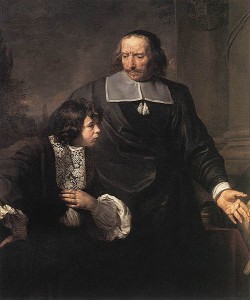
Amidst the anxiety parents feel about their ability to teach their children, it’s useful to remember a basic tenet of teaching. At the root of the verb to teach is an Old English word tæcan meaning “to show, point out, or demonstrate.”
Tæcan matches up with the German verb zeigen. I hear zeigen continually within the context of life in Weimar, a town in former East Germany where our family spends a lot of time and where I taught for my university.
Weimar is celebrated worldwide as Goethe’s City, a once-royal town where the iconic poet spent the majority of his adult life. It was home also at various times to J.S. Bach, Friedrich Schiller, Franz Liszt, Friedrich Nietzsche, and the founders of the Bauhaus School of Architecture, as well as a host of other European luminaries.
As you might guess, tourists swarm Weimar year-round. Solo tourists, group tourists—they define the economy of Weimar. And a lot of them get lost along the cobblestone alleys.
Which brings me back to zeigen (tæcan). On any given day, one hears Weimar residents responding kindly to a lost tourist’s inquires with “I’ll show you” (Ich zeige Sie). They walk the visitor right to Goethe’s front door or within pointing distance of the palace where Bach served as Court Organist. It’s so much easier to show people than to tell them.
Isn’t that what we’re doing when teach our kids? We’re showing them the importance of learning, not just handing out information. We’re showing that we’ve made learning a primary value in our homes. Even if we’re not sure where something is or not well-versed in a certain type of science or math, we demonstrate its value by the place of importance we give it.
We “show” our kids by taking their hands and leading them. If necessary, we consult the map or ask the experts. But we’re the ones who start the engines. We’re the ones providing the reassurance that they can reach the desired goal.
Have confidence in your desire to teach (or show!) your children. The path to your endpoint may twist or turn, but you are taking them along it. You will not leave them lost, flailing, or empty. Whether you know the route by heart or need to consult a guidebook, you will help them find their way.
The destination is not simply a topic or a course credit. The destination is the fulfillment of reaching a long-desired goal (even if it’s not yet their goal). Learning is like travel, and great effort goes into the journey long before the final point is reached. You are the teacher. Show them the way to discover their heart’s desire—a goal marked prominently on every parent’s map.



